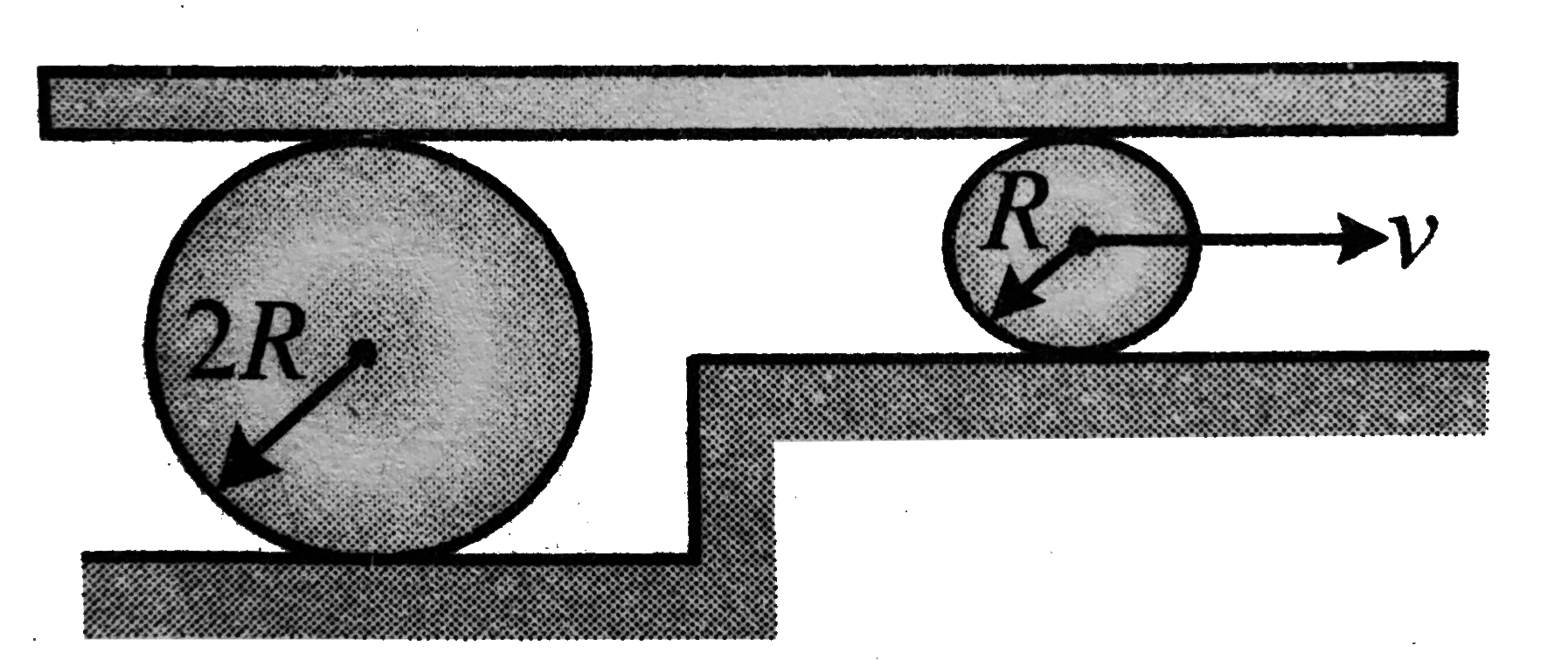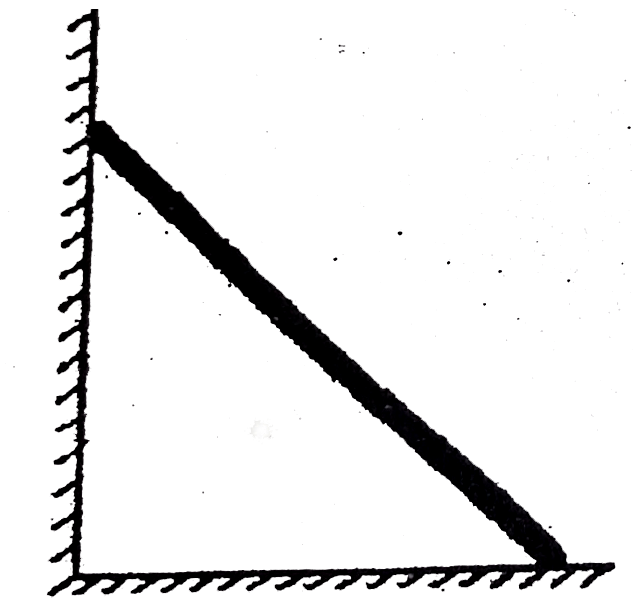A ladder placed on a smooth floor slips. If at a given instant the velocity with which the ladder is slipping on the floor is v1, and the velocity of that part of ladder which is touching the wall is v1, then the velocity of the centre of the ladder at that instant is:
v1
v2
v1+v22
√v21+v222
The correct Answer is:D
To find the velocity of the center of the ladder at the instant when it is slipping, we can follow these steps:
Step 1: Define the coordinates of the ladder
Assume the ladder makes contact with the wall at point (0, y) and with the floor at point (x, 0). The length of the ladder is L. The coordinates of the center of the ladder can be expressed as:
Center coordinates=(x2,y2)
Step 2: Establish the velocities of the points
Let:
- v1: the velocity of the point in contact with the floor (point at (x, 0)).
- v2: the velocity of the point in contact with the wall (point at (0, y)).
Since the ladder is slipping, we have:
dxdt=v1(for the point on the floor)
−dydt=v2(for the point on the wall)
Step 3: Find the velocity of the center of the ladder
The position vector of the center of the ladder is given by:
R=(x2,y2)
To find the velocity of the center, differentiate the position vector with respect to time:
Vcenter=dRdt=(12dxdt,12dydt)
Substituting the values of dxdt and dydt:
Vcenter=(12v1,12(−v2))=(12v1,−12v2)
Step 4: Calculate the magnitude of the velocity of the center
The magnitude of the velocity of the center can be calculated using the Pythagorean theorem:
|Vcenter|=√(12v1)2+(−12v2)2
This simplifies to:
|Vcenter|=12√v21+v22
Final Result
Thus, the velocity of the center of the ladder at that instant is:
12√v21+v22
---
Assume the ladder makes contact with the wall at point (0, y) and with the floor at point (x, 0). The length of the ladder is L. The coordinates of the center of the ladder can be expressed as:
Center coordinates=(x2,y2)
Let:
- v1: the velocity of the point in contact with the floor (point at (x, 0)).
- v2: the velocity of the point in contact with the wall (point at (0, y)).
dxdt=v1(for the point on the floor)
−dydt=v2(for the point on the wall)
The position vector of the center of the ladder is given by:
R=(x2,y2)
To find the velocity of the center, differentiate the position vector with respect to time:
Vcenter=dRdt=(12dxdt,12dydt)
Substituting the values of dxdt and dydt:
Vcenter=(12v1,12(−v2))=(12v1,−12v2)
The magnitude of the velocity of the center can be calculated using the Pythagorean theorem:
|Vcenter|=√(12v1)2+(−12v2)2
This simplifies to:
|Vcenter|=12√v21+v22
Thus, the velocity of the center of the ladder at that instant is:
12√v21+v22
Similar Questions
Two partticles A and B intially at rest move towards each other under a mutual force of attraction. The instant at which velocity of A is 4v and velocity of B is 2v, the velocity of centre of mass of the system at that instant will be
View SolutionA ladder rests on the floor of a room, leaning agains a wall. If the coefficient of static friction between the ladder the floor is μf and that between ladder and is μw, what is the minimum angle θ that the ladder can make with the floor if the ladder is not to slip? Assume that the mass of the ladder is distributed uniformly.
 View Solution
View Solution
Knowledge Check
- Question 1 - Select One
Velocity of the centre of a small cylinder is v. There is no slipping anywhere. The velocity of the centre of the larger cylinder is
 A2vBvC3v2Dnone of the above
A2vBvC3v2Dnone of the above - Question 2 - Select One
A ladder leans against a wall if the ladder Is not to slip which one of the following must be true?
 Athe coefficient of friction between the ladder and the wall must not be zeroBthe coefficient of friction between the ladder and the floor must not be zeroCBoth A and BDEither A or B
Athe coefficient of friction between the ladder and the wall must not be zeroBthe coefficient of friction between the ladder and the floor must not be zeroCBoth A and BDEither A or B - Question 3 - Select One
A 2 m ladder leans against a vertical wall. If the top of the ladder begins to slide down the wall at the rate 25 cm/s, then the rate (in cm/s) at which the bottom of the ladder slides away from the wall on the horizontal ground when the top of the ladder is 1 m above the ground is
A25√3B25√3C253D25
A ladder 3.7 m long is placed against a wall in such a way that the foot of the ladder is 1.2 m away from the wall. Find the height of the wall to which the ladder reaches.
View SolutionA ladder is placed along a wall of a house such that its upper end is touching the top of the wall. The foot of the ladder is 2m away from the wall and the ladder is making an angle of 60o with the level of the ground. Determine the height of the wall.
View SolutionA ladder 5 m long leans against a vertical wall. The bottom of the ladder is 3m from the wall. If the bottom of the ladder is pulled 1 m farther from the wall, how much does the top of the ladder slide down the wall
View SolutionA rope thrown over a pulley has a ladder with a man of mass m on one of its ends and a counter balancing mass M on its other end. The man climbs with a velocity vr relative to ladder. Ignoring the masses of the pulley and the rope as well as the friction on the pulley axis, the velocity of the centre of mass of this system is:
View SolutionIn the figure, a ladder of mass m is shown leaning against a wall. It is in static equilibrium making an angle θ with the horizontal floor. The coefficient of friction between the wall and the ladder is μ1 and that between the floor and the ladder is μ2. the normal reaction of the wall on the ladder is N1 and that of the floor is N2. if the ladder is about to slip. than
 View Solution
View Solution

